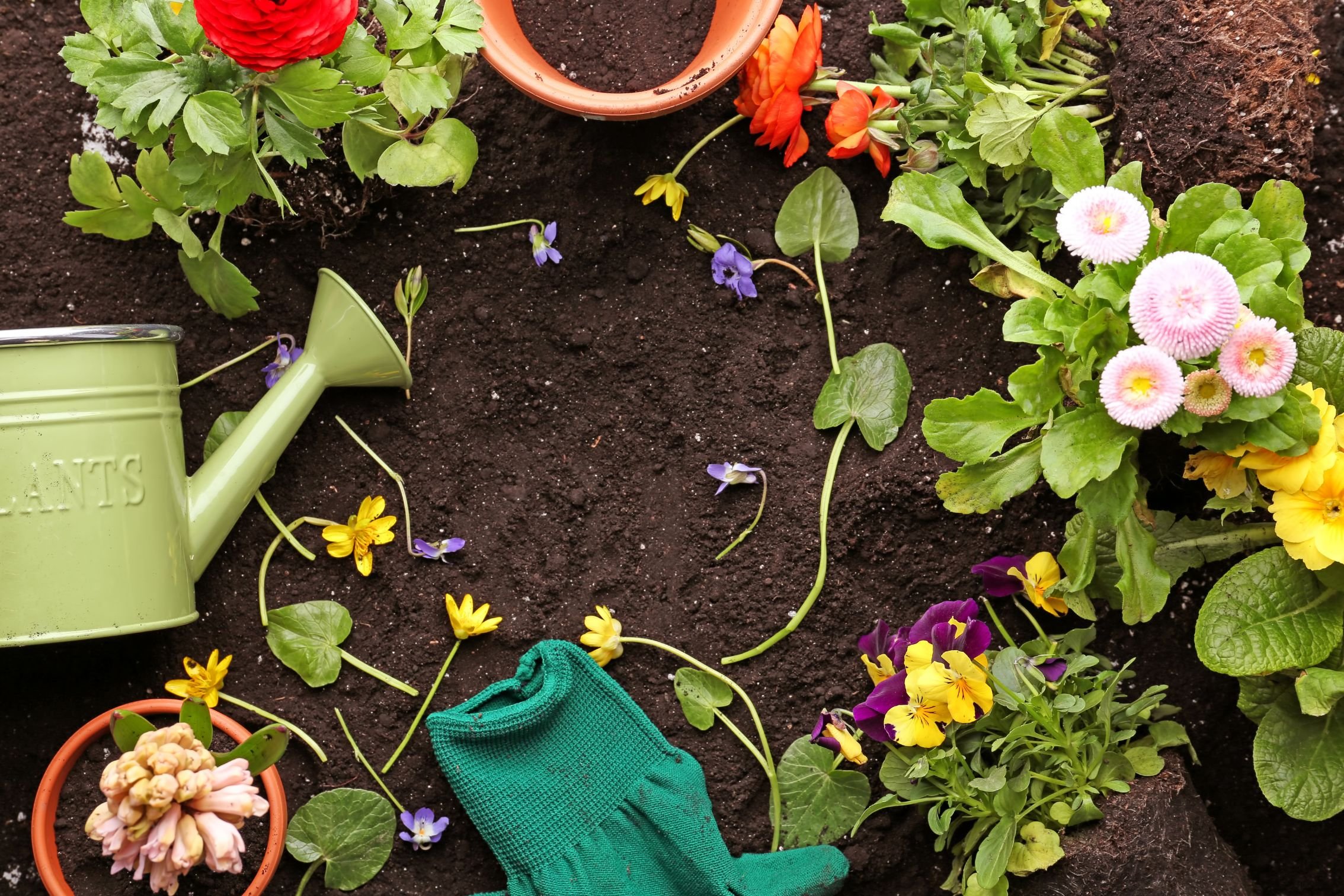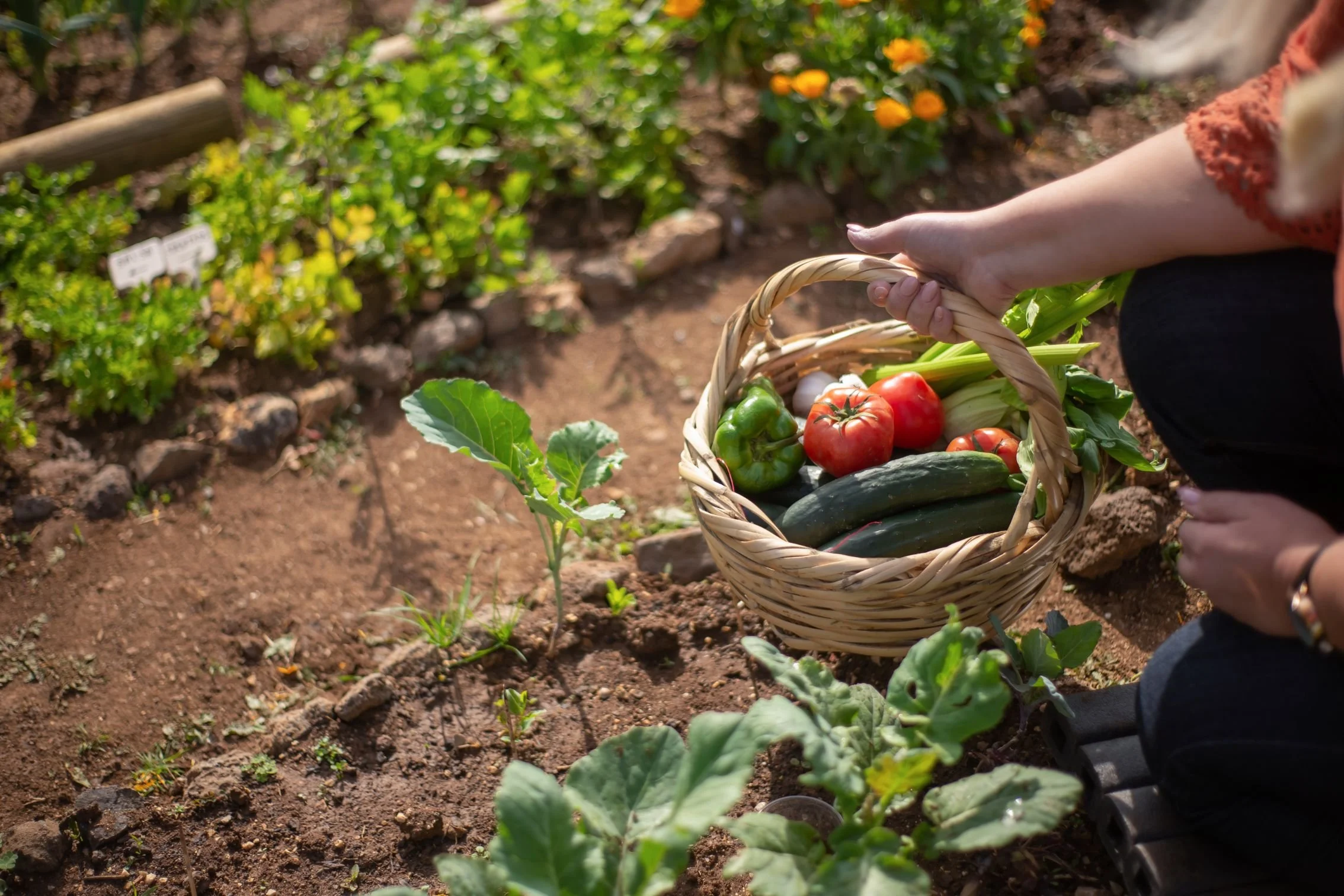
February Gardening.
Gardening in February?
Oh, you bet it's a delightful adventure! it's the perfect moment to plant some seeds and reap those tasty rewards.
So, buckle up for a fun-filled, oh-so-informative guide that'll turn your February garden into the talk of the town!
Vegetables.
Vegetables to Plant in February
February is a great time to start planting for the cooler months. Here are some vegetables that thrive when planted during this period:
Carrots: Sow your carrot seeds directly into the soil. They prefer well-drained, loose soil to develop long, straight roots.
Beetroot: Another root vegetable that can be sown directly. They are relatively easy to grow and can be harvested when small or left to grow larger.
Lettuce: Plant different varieties for a continuous harvest through autumn. Lettuce prefers partial shade to avoid the scorching summer sun.
Spinach: Known for its versatility, spinach can be planted now to enjoy fresh, tender leaves in a few weeks.
Broccoli and Cauliflower: These brassicas are perfect for cooler weather. Start them off in seed trays and transplant them when they're a bit larger.
Radishes: Quick to mature, radishes can be a satisfying addition to your garden and are perfect for salads.
Vegetables Ready to Harvest in February
While February is a planting month, there are also several vegetables ready for harvest:
Tomatoes: These summer staples should be ripening beautifully. Keep picking them to encourage further fruiting.
Capsicums: Similar to tomatoes, capsicums are ready to be picked once they reach the desired color.
Cucumbers: Refreshing and crisp, cucumbers can be harvested as soon as they are big enough for your liking.
Zucchini: These are best picked when young and tender. Regular harvesting encourages more growth.
Sweetcorn: Look for browning tassels and a firm feel to the cobs to know when they’re ready to be picked.
Tips for Gardening in February
Water Wisely: With the heat still present, ensure your garden is well-watered, especially in the early morning or late afternoon to reduce evaporation.
Mulch: Applying mulch around your plants helps retain moisture, suppress weeds, and gradually adds nutrients to the soil.
Pest Control: Watch for common pests like aphids and caterpillars. Consider natural remedies like neem oil or introduce beneficial insects like ladybugs.
Soil Health: Enrich your soil with DCT Lazerhume, if adding organic compost or well-rotted manure to prepare for the next planting season, applying Lazerhume to this material can help it work better and protect your soil and plants from any chemical contamination contained in the compost or manure.
Pruning: Trim back overgrown plants and remove any dead or diseased foliage to maintain plant health and appearance.
What to Look Out For
Weather Changes: February can bring unpredictable weather in some places around this paradise we call NZ, so keep an eye on forecasts and protect young seedlings from sudden temperature drops.
Disease Prevention: With humidity, fungal diseases can spread. Ensure good air circulation and avoid wetting foliage when watering.
Plan for Autumn: Think ahead to your autumn garden. Consider adding an extra dose of Lazerhume as well as your normal dose of DCT products for some soil health and plan for successive plantings.
Every purchase from our website goes into our monthly prize draw.
Flowers
February is a wonderful time for flower gardening in New Zealand. As the summer heat starts to ease, it's a perfect opportunity to plant certain flowers that will bloom beautifully in the months to come. Here’s a fun and informative guide to help you enhance your flower garden in February.
Flowers to Plant in February
February offers a favorable climate for sowing and planting a variety of flowers. Here are some delightful blooms to consider:
Pansies
These cheerful flowers are hardy and can add a splash of color to your garden. They thrive in cooler weather and can be planted directly into the garden.
Violas
Closely related to pansies, violas are perfect for adding vibrant hues to borders and containers. They are resilient and perform well in the cooler temperatures.
Sweet Peas
Renowned for their fragrant blooms, sweet peas can be sown now to enjoy their colorful flowers in the coming months. Provide a trellis or support for them to climb.
Dianthus
Also known as pinks, dianthus flowers offer a delightful scent and are perfect for borders and rock gardens. They prefer well-drained soil and full sun.
Stock
With their lovely fragrance, stock flowers are ideal for garden beds and pots. They thrive in cooler weather and can be sown directly in the garden.
Calendula
These bright and cheerful flowers are easy to grow and can tolerate cooler temperatures. They are excellent for attracting beneficial insects to your garden.
Tips for Flower Gardening in February
Watering Strategy
Ensure your flowers receive adequate water, especially during dry spells. Water in the early morning or late afternoon to minimize evaporation.
Deadheading
Regularly remove spent blooms to encourage more flowering and maintain a tidy appearance in your garden.
Fertilisation
Use DCT Garden to promote healthy growth and abundant blooms. Apply according to the instructions on the bottle.
Mulching
Apply mulch around your flowers to retain moisture, suppress weeds, and improve soil quality. Organic mulch is particularly beneficial.
Pest Management
Keep an eye out for common garden pests like slugs and snails. Handpicking or using organic pest control methods can help protect your flowers.
What to Look Out For
Weather Variability
February can bring sudden changes in weather. Be prepared to protect your young plants from unexpected cold snaps or heavy rains.
Disease Control
Keep an eye out for signs of fungal diseases due to humidity. Ensure good air circulation around plants and avoid wetting the foliage.
Plan for Seasonal Transition
As you enjoy your February blooms, begin planning for autumn flower planting. Consider the use of companion planting to maximize garden space and health.
Did you know we also have a Natural Animal Health product called “Animal Boost.
LAWN
Taking care of your lawn in February can set the stage for a lush, green paradise in the months to come. As summer winds down in New Zealand, it’s the perfect time to focus on maintaining and preparing your lawn for the cooler weather. Here’s a fun and informative guide to help you keep your lawn looking its best.
Tips for Maintaining a Healthy Lawn
Mowing Practices
Continue regular mowing, but adjust the height of your mower blades to leave your grass slightly longer. This helps protect the roots from heat and promotes healthy growth.
Watering Routine
Keep your lawn hydrated by watering deeply and infrequently. Aim for early morning or late afternoon watering to minimize evaporation and encourage deep root growth.
Fertilisation
Apply DCT Lawn to provide your lawn with essential nutrients. Consider applying phosphorus, and potassium to support healthy growth.
Weed Management
Monitor your lawn for weeds and remove them promptly. Consider using natural herbicides or hand-pulling to maintain a weed-free lawn without harming the environment. Our “Weed Spray Enhance” Product is designed to be added to chemical herbicides to protect the environment.
Aeration
If your lawn feels compacted, consider applying DCT Lazerhume, Lazerhume works over time by freeing up the soil reducing compaction. This process allows air, water, and nutrients to reach the roots more effectively, promoting stronger growth.
Tricks for Enhancing Lawn Appearance
Edging
Create clean lines around your lawn by edging along pathways, driveways, and garden beds. This adds a neat and professional look to your landscape.
Repairing Bald Spots
Identify and repair any bald or thin spots by overseeding. Choose grass seed that matches your existing lawn for a seamless appearance.
Thatch Control
Check for thatch build-up, which can prevent water and nutrients from reaching the soil. If necessary, dethatch your lawn to improve its overall health.
What to Look Out For
Pest Monitoring
Keep an eye out for lawn pests such as grubs and beetles. Consider adding some extra organic DCT Lazerhume to your lawn it will help to manage any infestations and promote beneficial insects and microorganisms.
Disease Prevention
Watch for signs of fungal diseases, especially in humid conditions. Ensure your lawn has good air circulation and avoid overwatering to reduce the risk of disease. DCT lawn will help control this.
Weather Changes
Be prepared for unexpected weather changes. Protect your lawn from heavy rains or prolonged dry spells by adjusting your care routine as needed.
With these tips and tricks and a bit of DCT Lawn or DCT Lazerhume, your lawn can remain vibrant and healthy throughout February and beyond.
Enjoy your outdoor space with confidence, knowing that your efforts will pay off in a beautiful lawn come autumn.
Recipe
Utilise the fresh vegetables from your February harvest with this delightful Sweetcorn and Zucchini Fritters recipe. These fritters are perfect for a light lunch, a tasty snack, or as a side dish for your evening meal.
They are easy to make and packed with flavor.
Ingredients
2 cups of freshly harvested sweetcorn kernels (about 2-3 cobs)
1 medium zucchini, grated
1 small onion, finely chopped
1/2 cup of all-purpose flour
1/4 cup of cornmeal (optional, for extra crunch)
2 eggs, lightly beaten
1/4 cup of milk
1 teaspoon of baking powder
Salt and pepper to taste
A handful of fresh herbs (such as parsley or chives), chopped
Oil for frying
Instructions
Prepare the Vegetables: Start by removing the kernels from the sweetcorn cobs and placing them in a large mixing bowl. Grate the zucchini and add it to the bowl. If the zucchini is particularly watery, squeeze out any excess moisture using a clean kitchen towel.
Mix the Batter: Add the chopped onion, flour, cornmeal, and baking powder to the bowl with the vegetables. Stir to combine. In a separate bowl, whisk together the eggs and milk, then pour this mixture into the vegetable mixture. Stir until just combined. Season with salt, pepper, and fresh herbs.
Cook the Fritters: Heat a tablespoon of oil in a large frying pan over medium heat. Once hot, drop spoonfuls of the batter into the pan, flattening them slightly with the back of the spoon. Cook for about 2-3 minutes on each side, or until golden brown and cooked through.
Serve: Transfer the cooked fritters to a plate lined with paper towels to drain any excess oil. Serve warm with a dollop of sour cream or a tangy yogurt dip.
Tips
Customize: Feel free to add other vegetables or spices to the batter for extra flavor. Diced capsicums or a pinch of chili powder can add a nice kick.
Make Ahead: These fritters can be made in advance and stored in the refrigerator for up to 3 days. Reheat them in the oven for a few minutes before serving.
Dietary Adjustments: For a gluten-free version, substitute the flour with a gluten-free flour blend.
Enjoy these fritters as a delicious way to celebrate the bounty of your February garden in New Zealand!





